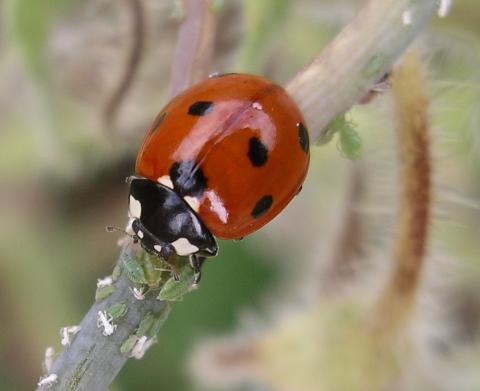The days are getting warmer and our risk of overnight frosts has now just about passed. This means that some of the seeds we planted in pots and trays and have kept indoors up until now (see Gardening in Spring) can now be moved outdoors.
We use a technique called transplanting to move our plants from one location to another, and in most cases we are moving our plants from pots/trays indoors to beds outdoors. By transplanting our plants outdoors we are providing them with more space to grow deeper and stronger roots. We may also transplant plants by potting them up into larger pots as seedlings grow and become more established.
Useful video on transplanting:
Garden pests and friends
When we plant anything outdoors it becomes vulnerable to birds, slugs, and a variety of other pests. You may have noticed some of these pests during your gardening clubs and wondered what we can do about them. There are also many minibeasts that provide beneficial services to our gardens and so it is important for us to know the difference between our garden pests and garden friends, so we can control them.
Pests may interfere with our gardens by eating our plants, sucking plant sap, or laying eggs, which all can ultimately lead to our plants being killed or their production being reduced.
| Garden Pests | Control Method |
| Slugs and snails | Use broken egg shells or ground coffee and place these around the base of the plant. Copper tape can be used around the top of plant pots. |
| Caterpillars | Look out for eggs and remove infested leaves. Use netting to cover plants. |
| Aphids and Blackfly | Blast with water/squash. Encourage ladybirds and hoverflies (they will eat the pests). Remove infested parts of plants. |
| Butterflies | Put netting over plants to stop them laying eggs. |
Our garden friends on the other hand benefit our gardens by providing composition and breakdown services (especially helpful for our compost bins), eating our pests, as well as pollinating our plants!
| Garden Friends | Promotion Method |
| Earthworms | Reduce tilling of soil (turning over and breaking up). Leave organic matter on surface of soil. Use manure and compost. |
| Ladybirds | Plant flowers that are attractive to ladybirds (E.g. Calendula, Cosmos, Marigold). Limit use of insecticides. |
| Hoverflies | Reduce mowing of lawn. Plant hoverfly-friendly flowers (E.g. Aster, Fennel etc) |
| Woodlouse | Provide cover. |
| Lacewings | Provide nectar-rich plants. Provide water and safe havens for hibernation over winter. |
| Wasps | Plant trees, flowers, and crops that they use for food or shelter (E.g. Fruit trees, Forsythia etc) |
As our plants continue to grow, we will use these different techniques to prevent pests and attract friends. When preventing the pests, we will use eco-friendly methods and limit the use of pesticides so that our gardening is as environmentally conscious as possible.
Which of these are pests and which are friends?




